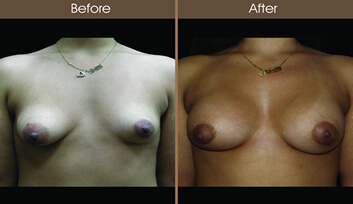
Breast Reconstruction (Reconstruction Mammoplasty)
Breast Reconstruction (Reconstruction Mammoplasty)
New York Breast Reconstruction
According to the American Cancer Society, more than a quarter million American women face breast cancer every year. For many of these women, in addition to coping with the challenges of their cancer, they must also make difficult choices about breast reconstruction. At Plastic Surgery & Dermatology of NYC, we understand that your cancer treatment is of primary importance, but we also recognize that breast reconstruction can be an important part of the recovery process for breast cancer survivors. The decision about whether to have breast reconstruction is a deeply personal one. The loss of a breast can be traumatic, but for many women, breast reconstruction may help improve self-image and restore a sense of femininity. We will work together with you in a caring and supportive environment to help you navigate through the breast reconstruction options so that you can make the best choice for your personal situation. Dr. Levine is highly skilled and experienced in all types of breast reconstruction (reconstruction mammoplasty), including implant based reconstruction, as well as advanced tissue flap procedures that use your own natural tissue to reconstruct the breast. Whatever your decision, we are here to help you through every stage of your breast reconstruction process.
| BREAST RECONSTRUCTION OPTIONS AT A GLANCE | |||
| Procedure | Process | Implant Required?* | Recovery from Initial Procedure* |
| Breast Implant | Uses tissue expander to slowly stretch skin and muscle to create a pocket for breast implant |
Implant required; tissue expansion occurs over the course of several months | 1-2 weeks |
| TRAM Flap | Uses skin, fat, and muscle from patient’s abdomen to reconstruct breast | No implant required; patient benefits from a “tummy tuck” in the donor area | 3-4 weeks |
| Latissimus Dorsi Flap | Uses skin, fat, and muscle from patient’s back to reconstruct breast | Implant may be required, depending on patient anatomy | 2-3 weeks |
What types of breast reconstruction procedures are available?
There are many different ways to reconstruct breasts after mastectomy. In general, procedures fall into three categories: reconstruction using breast implants, reconstruction using the patient’s own tissue (autologous breast reconstruction), or a combination of tissue flap procedures and breast implants.
Implant breast reconstruction. Many women elect to use breast implants to rebuild the breasts after mastectomy. In most cases, this procedure is done in three stages. During the first stage, a tissue expander is placed underneath the pectoralis muscle in the chest. The tissue expander will be slowly and steadily inflated with saline solution over the course of several months in order to stretch the breast skin and muscle sufficiently to create a pocket to support the breast implant. Once the expansion stage is complete, the tissue expander will be surgically removed and a breast implant will be placed. Some patients are candidates for fat grafting to help camouflage the implant and better shape the breast. The reconstruction process is completed with nipple and areola reconstruction during the final stage.
Autologous breast reconstruction: Autologous breast reconstruction uses the patient’s own skin, muscle, and fat to reconstruct the breasts. During this procedure, a tissue “flap” is moved from one area of the body (the donor site) to the breast. Many patients are candidates for both Pedicled Flaps (flaps in which the original blood supply is left intact), as well as Free Flaps (flaps in which the blood supply is reestablished after the flap is relocated, allowing the flap to be moved a greater distance from the donor site). There are several different types of autologous breast reconstruction, including TRAM Flap breast reconstruction and Latissimus Dorsi Flap breast reconstruction. TRAM (transverse rectus abdominus musculocutaneous) Flap reconstruction uses skin, fat, and muscle from the patient’s abdomen to reconstruct the breast. Because excess fat is removed from the abdomen during the TRAM flap procedure, patients benefit from a “tummy tuck” slimming effect at the donor site. Latissimus Dorsi Flap reconstruction uses muscle, fat, and skin taken from the patient’s back in order to reconstruct the breast. With both the TRAM Flap and Latissimus Dorsi Flap procedures, nipple and areola reconstruction is completed in a separate procedure during the final stage of breast reconstruction.
Combination tissue flap and implant breast reconstruction: In some instances, the patient doesn’t have enough skin, muscle, and fat available in order to rebuild the breasts. In those cases, a successful breast reconstruction can be effected using a combination of autologous tissue transfer together with breast implants.
How many procedures will I need to complete breast reconstruction?
Breast reconstruction is accomplished in stages. The number of reconstructive procedures needed will depend on the characteristics of the deficit, the type of reconstruction procedure used, and the size and shape of the other breast. In general, the first stage surgery will be the most involved procedure. Additional surgeries may be needed for shaping and contouring, implant placement, and nipple and areola reconstruction. Dr. Levine will discuss with you what to expect during every stage of the breast reconstruction process.
Should I have immediate or delayed breast reconstruction?
Dr. Levine can perform both immediate breast reconstruction (at the same time as the mastectomy), as well as delayed breast reconstruction (any time after the mastectomy). The decision on when to begin the breast reconstruction process will depend on many factors, including your overall health, the stage of your cancer treatments, and your personal preferences. Some women prefer immediate reconstruction in order to decrease the number of surgeries needed to complete the reconstruction. Other women elect to wait until they have recovered from the emotional and physical challenges of the cancer treatment and mastectomy. In some cases, breast reconstruction should be delayed until additional cancer treatments are completed. You should discuss all your breast reconstruction options, including the timing of the breast reconstruction, with both your oncologist and Dr. Levine prior to your breast cancer treatment, if possible.
Who is a good candidate for breast reconstruction?
Patients who wish to restore breast shape after breast cancer treatment may be good candidates for breast reconstruction. Patients should be in good overall health and have realistic expectations for the outcome. Dr. Levine will meet with you to discuss your goals and expectations, and help you determine if breast reconstruction would be right for you.
What kind of results can I expect from breast reconstruction surgery?
Many women report excellent results from breast reconstruction surgery, including an improved sense of self-confidence.* However, women considering breast reconstruction surgery should realize that although reconstruction can restore breast shape, it cannot restore normal breast sensation that was lost due to mastectomy. Additionally, there will usually be scarring present either as a result of the mastectomy or the reconstruction. There may also be scarring at any donor sites used. Dr. Levine will meet with you to discuss your goals and expectations, as well as the best ways to limit scarring. He will also answer any questions that you may have.

What are the options for breast reconstruction after breast conservation surgery?
There are many excellent reconstructive techniques that may help to improve breast shape, appearance, and symmetry after breast conservation surgery. The techniques used will vary from patient to patient, depending on the results of the initial breast surgery and cancer treatments, as well as the specific reconstructive goals of the patient. Whether you’re seeking improvement on the affected breast, or symmetry with the non-involved breast, Dr. Levine can discuss all the options that are available and answer any questions that you may have.
Can breast reconstruction be combined with other procedures?
The initial stages of breast reconstruction are usually not combined with additional procedures. However, one of the goals of breast reconstruction is not only to improve the shape of the affected breast, but also to achieve a natural-looking balance between the two breasts. Since the later stages of breast reconstruction are typically less involved procedures, they are sometimes combined with surgery on the non-involved breast in order to improve breast symmetry. These procedures could include breast augmentation, breast reduction, breast lift, or breast asymmetry correction. Dr. Levine will discuss with you what procedure or combination of procedures may best suit your specific needs.
How can I prepare for breast reconstruction surgery?
During your initial consultation, Dr. Levine will examine your breasts to determine their physical condition, the quality of skin and muscle, and the characteristics of any intended donor sites for autologous tissue transfer. He will also discuss in detail your cancer treatments, as well as your goals and expectations for breast reconstruction, including possible risks and the best way to prepare for your surgeries. He will let you know what to expect before, during, and after your procedures, and he will answer any questions that you may have.
What type of anesthesia will be used for breast reconstruction surgery?
Breast reconstruction is usually performed in a series of procedures. General anesthesia is used for the initial surgery. The type of anesthesia recommended for subsequent surgeries will depend on the extent of the procedure. You will discuss each procedure thoroughly with both Dr. Levine and our board-certified anesthesiologist to determine the best type of anesthesia for your needs.
What can I expect during breast reconstruction surgery?
Breast reconstruction surgery is completed over a series of procedures. The initial surgery is performed in the hospital and may be done at the time of the mastectomy or as a delayed procedure. For immediate breast reconstruction with tissue expander and breast implants, the patient usually stays overnight in the hospital. If tissue expander and breast implants are done as a delayed procedure, the patient can usually go home the same day with a friend or family member. Autologous tissue flap procedures require a longer hospital stay, usually 2 to 4 days, whether done at the time of the mastectomy or as a delayed procedure.* Subsequent breast reconstruction procedures may be performed in the hospital or in our state-of-the-art, in-office operating suite, which is accredited by the American Association for Accreditation of Ambulatory Surgery Facilities (AAAASF). Subsequent procedures are often less involved, and usually the patient may return home the same day with a friend or family member.
What can I expect after breast reconstruction surgery?
Every surgery is different, and you will receive detailed post-operative instructions for your specific needs. Dr. Levine will discuss with you in detail what to expect during every stage of your breast reconstruction process. At Plastic Surgery & Dermatology of NYC, our concern for you doesn’t end when you go home. We’re dedicated to providing ongoing care to ensure a fast, safe, and smooth recovery. Dr. Levine will see you for post-operative visits, and he and our staff stand ready to answer any questions you may have about your recovery, as well as your overall health and well-being.